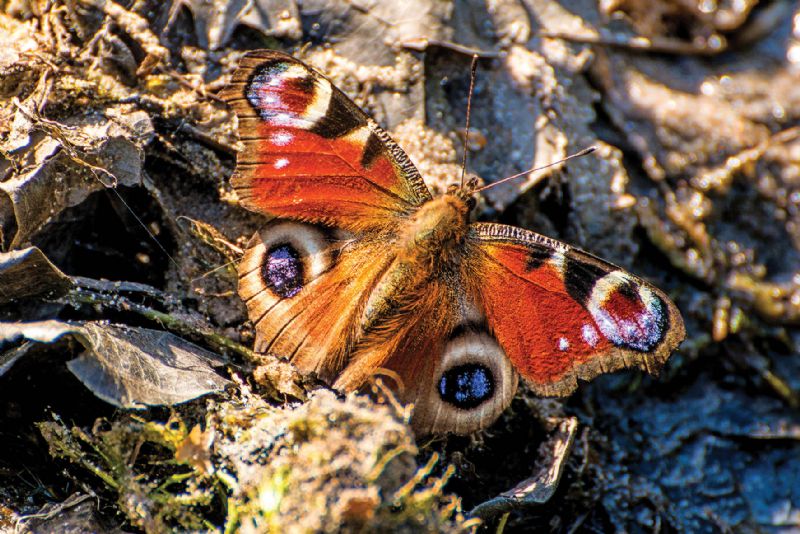- Home
- News, Articles & Reviews
We are hiring! Please click here to join our growing magazine delivery team in Gloucestershire!
Areas
Pets & Wildlife
Archive

Hibernating butterflies
All Areas > Pets & Wildlife > Wildlife Matters
Author: Dorothy Glen, Posted: Tuesday, 21st December 2021, 09:00
I have strong memories of visiting a particular family-favourite nature reserve, on one of those spectacular mornings when the sun glitters on frozen old cobwebs and hoar frost fringes leaves with fluffy white edges.
We walked along the edge of a frozen field with the bordering hedgerow sparkling beside us, then through some woodland where we’d once spotted a tawny owl perched metres from us, minding its own business. Then we emerged to views over the countryside, with the steep bank in front of us falling away to an old railway cutting.
Down the steps was the best part: as we lowered into the cutting, the gaping mouth of the old railway tunnel loomed out of the bank beside us. At that time, you could still walk through it, and we went prepared with torches. It was surprising how quickly we lost daylight when we went inside, but we didn’t have to go far before finding what we were looking for.
Sending our torch beams upwards, we looked for signs of life. Bats snoozed above our heads, but there was something else up there too. Huddled together in nooks and corners were peacock butterflies, their dark underwings casting triangular shadows onto the tunnel roof.
Tucked away with small tortoiseshells
It seems odd to think of the vibrant reds and purples of peacock butterflies on days where the land is lit with pale winter sun, and the plants and trees are white-blue with frost. But they are there, tucked away, along with small tortoiseshells, brimstones and commas. These species of butterfly hibernate through our winter, seeking out sheltered spots where they may close their wings and be left in peace until the spring.
Peacocks favoured the old railway tunnel, but we see hibernating butterflies closer to home too. It is often small tortoiseshell butterflies that we spot tucked into dark corners indoors, after first sneaking inside in the late summer when houses feel cool.
I once found one snoozing in a shower room in a holiday cottage. Unfortunately, if they stay indoors enjoying our central heating they may become active and use up the energy reserves needed to last the winter. So if you find one in your house, the best thing to do is gently move it to a cool, dark shed or garage where it can settle down safely, or release it on a bright day when there’s warmth in the sun, so it can find its own refuge.Other Images
Copyright © 2025 The Local Answer Limited.
Unauthorized use and/or duplication of this material without express and written permission from this site's author and/or owner is strictly prohibited. Excerpts and links may be used, provided that full and clear credit is given to The Local Answer Limited and thelocalanswer.co.uk with appropriate and specific direction to the original content.More articles you may be interested in...


© 2025 The Local Answer Limited - Registered in England and Wales - Company No. 06929408
Unit H, Churchill Industrial Estate, Churchill Road, Leckhampton, Cheltenham, GL53 7EG - VAT Registration No. 975613000You are leaving the TLA website...
You are now leaving the TLA website and are going to a website that is not operated by us. The Local Answer are not responsible for the content or availability of linked sites, and cannot accept liability if the linked site has been compromised and contains unsuitable images or other content. If you wish to proceed, please click the "Continue" button below:




